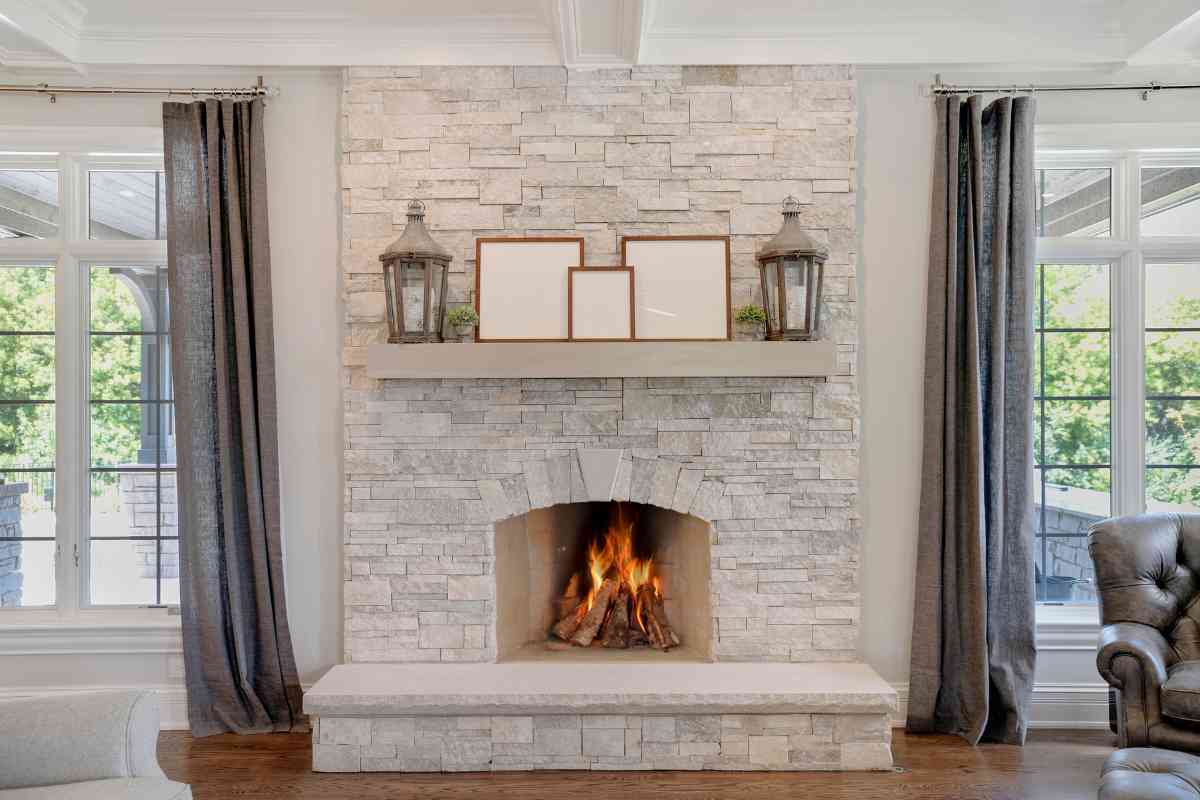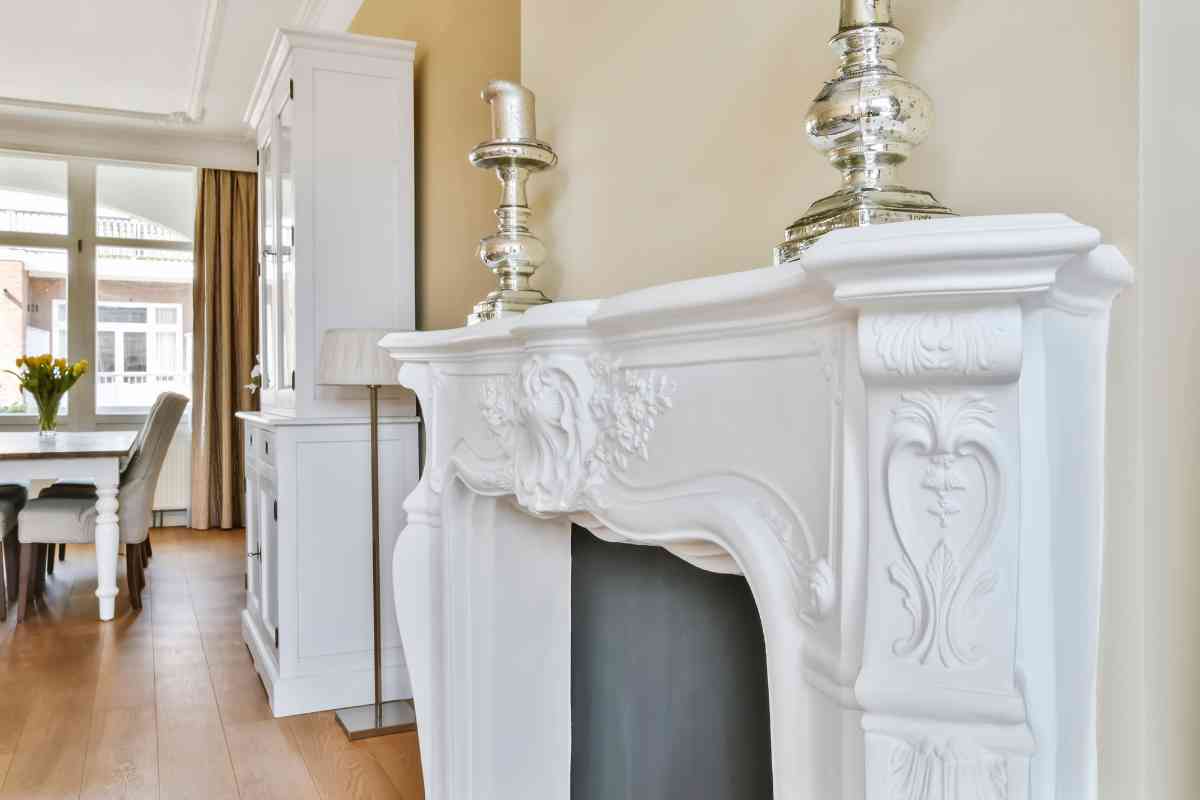Are Fireplaces Load-Bearing?
Fireplaces are built to provide warmth and ambiance and their load-bearing capacity varies depending on their specific construction.

Related Post! Do Fireplaces Make Your House Colder? Answered!
Are Fireplaces Load-Bearing?
Fireplaces become load-bearing if they are positioned against the wall. This way, they can act as structural support. However, it is crucial to turn to a qualified professional to determine the load-bearing capacity of a fireplace in a specific building.
I have seen fireplaces and brick chimneys that are load-bearing. Though it’s not a major concern for a fireplace to be structural, the load-bearing elements should be firm and competent enough for the role. We gathered information from contractors and builders to compile this report about fireplace load bearing.
Essential Insights
- Typically, fireplaces do not serve as load-bearing structures.
- Chimneys can provide necessary support for fireplaces that are load-bearing.
- The suitability of a load-bearing fireplace hinges on the specific structural needs of the building.
How Do You Tell If a Fireplace is Load-Bearing?
Determining if a fireplace is non-load-bearing is crucial for understanding its role within your home’s structure. Here are key indicators to help you discern if a fireplace lacks load-bearing qualities, with insights integrated from various sources.

Related Post! My #1 Fire Starter
Location is Key
A significant marker is the location of the fireplace. Non-load-bearing fireplaces are often situated on interior walls, not central to the home’s layout. This placement indicates a lack of foundational support essential for load-bearing capabilities.
Foundation’s Role
Support-bearing walls are fundamental to a home’s structure, resting on foundations that extend beneath the ground to evenly distribute the structure’s weight. Fireplaces devoid of such foundational backing typically do not bear load.
Parallelism with Floor Beams
The orientation of a fireplace concerning floor beams can offer clues. Support-bearing walls align with these beams, providing necessary support. A fireplace situated non-parallel to these beams likely does not serve a load-bearing function.
Lack of Connection
Connectivity to other support-bearing walls is a hallmark of structural elements designed to share the weight of the house. Isolated fireplaces, without such connections, point towards a non-load-bearing nature.
Insights from Construction Plans
Inclusion in original construction plans signifies a structural role. Add-on fireplaces post-construction usually lack the integration into the home’s main structure, suggesting they are non-load-bearing.
While these indicators provide valuable guidance, the definitive identification of load-bearing elements should be left to professionals, such as structural engineers. They possess the expertise to thoroughly assess your home’s blueprint and provide accurate evaluations.
Related Post! How Hot Are Fireplace Coals?
How Do You Tell a Fireplace Is Non-Load-Bearing?
Identifying whether a fireplace is non-load-bearing is essential for planning renovations or understanding your home’s structure. Here’s how to discern the structural role of your fireplace, with insights from industry professionals.

Location Matters
The location of a fireplace significantly hints at its structural role. Non-load-bearing fireplaces are typically situated on interior walls away from the home’s center, indicating a lack of foundational support, essential for bearing weight.
Foundation’s Absence
Support-bearing walls, pivotal to the home’s structural integrity, rest on foundations extending below ground level to evenly carry the structure’s weight. A fireplace without such a foundation is unlikely to bear any load.
Orientation with Floor Beams
The alignment of a fireplace with respect to floor beams provides clues to its structural nature. If a fireplace runs non-parallel to these beams, it suggests a non-load-bearing status.
Lack of Connectivity
Support-bearing walls are interconnected, aiding in the uniform distribution of the house’s weight. Fireplaces isolated from these structural networks are typically non-load-bearing.
Insights from Construction Plans
Inclusion in the home’s original construction plans usually denotes a structural purpose. Fireplaces added post-construction, lacking integration with the home’s main structure, are not designed to bear weight.
To accurately determine if a fireplace is non-load-bearing, consulting with a structural engineer or qualified professional is advised. They possess the expertise to evaluate your home’s structural blueprint and make definitive assessments.
Related Post! How Long Do Fireplace Ashes Stay Hot? Answered!
Can Chimneys Offer Structural Support to Fireplaces?

Chimneys play a crucial role in supporting fireplaces, though they aren’t the primary structural support for the fireplace unit itself.
The weight of the fireplace, along with additional loads such as the chimney’s weight and the materials used for the fireplace’s construction, relies on the support of surrounding walls or foundations rather than the chimney alone. The primary role of the chimney is to channel smoke and combustion fumes from the fireplace to the building’s exterior.
In older constructions, however, the chimney may serve as an integral part of the building’s structure, supporting the weight of the fireplace and additional loads.
Evaluating Load-Bearing Fireplaces: Benefits and Drawbacks
Opting for a load-bearing fireplace comes with its set of advantages and disadvantages.

Pros:
- Aesthetically Pleasing: A load-bearing fireplace can serve as the centerpiece of a room, enhancing its visual appeal.
- Structural Stability: Especially in older buildings, load-bearing fireplaces can contribute additional stability, as they’re often integral to the building’s structure.
Cons:
- Increased Cost: The construction of a load-bearing fireplace often entails higher expenses due to the need for extra materials and labor.
- Maintenance Needs: The added weight and structural stress demand more frequent maintenance for load-bearing fireplaces.
- Complex Construction: Erecting a load-bearing fireplace requires specialized skills and knowledge, making the construction process more intricate.
- Design Limitations: Structural necessities may restrict the design possibilities of a load-bearing fireplace.
When considering the removal or upgrade of a fireplace, or when dealing with issues like heat loss through chimney flues or ensuring proper ventilation, it’s crucial to understand the fireplace’s structural role. For homeowners contemplating renovations, such as installing wood-burning fireplaces or addressing leaks and mortar deterioration, this knowledge is key.
Before embarking on a DIY project involving fireplace removal or partition walls, consulting professionals is advised to prevent severe structural damage. Always comply with building permit requirements and consider the fireplace maintenance tips shared by the online community on platforms like Home Improvement Stack Exchange or Stack Overflow. These q&a communities can offer valuable personal experience and clarification on managing your fireplace’s structural and aesthetic aspects safely.


![How Do Yurts Hold Up In Storms? [Life-Saving Facts!]](https://freedomresidence.com/wp-content/uploads/2022/05/How-Do-Yurts-Hold-Up-In-Storms-768x512.jpg)



